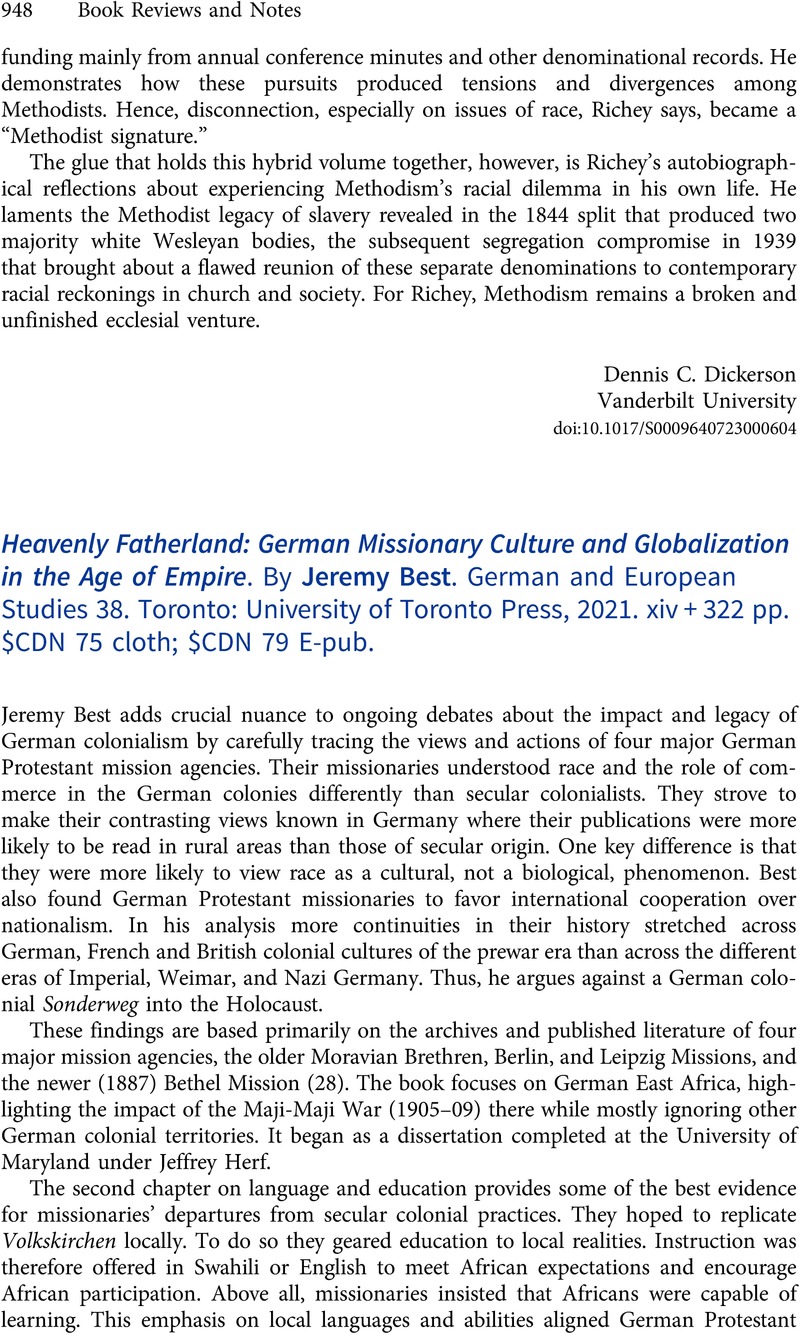No CrossRef data available.
Article contents
Heavenly Fatherland: German Missionary Culture and Globalization in the Age of Empire. By Jeremy Best. German and European Studies 38. Toronto: University of Toronto Press, 2021. xiv + 322 pp. $CDN 75 cloth; $CDN 79 E-pub.
Review products
Heavenly Fatherland: German Missionary Culture and Globalization in the Age of Empire. By Jeremy Best. German and European Studies 38. Toronto: University of Toronto Press, 2021. xiv + 322 pp. $CDN 75 cloth; $CDN 79 E-pub.
Published online by Cambridge University Press: 03 May 2023
Abstract
An abstract is not available for this content so a preview has been provided. Please use the Get access link above for information on how to access this content.

- Type
- Book Reviews and Notes
- Information
- Copyright
- Copyright © The Author(s), 2023. Published by Cambridge University Press on behalf of American Society of Church History


